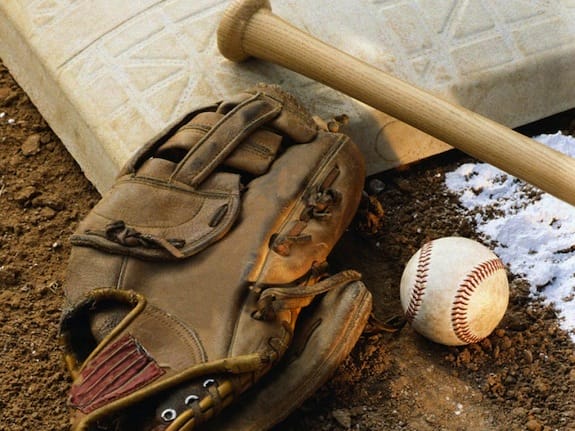Put down your peanuts and crackerjacks, it’s time to play ball! Baseball mitts and vary in price tremendously. One way to get a good deal on a baseball or softball glove is to get a used one on Craigslist or eBay. Think of it as glove that someone else has already broken in for you!
Search for the name of any glove you’re looking to buy and Priceonomics will analyze our data to tell you the fair market price for the baseball glove. Below, Priceonomics contributor Valerie Farabee has put together a basic guide to help you buy a baseball or softball glove. May your innings be error-free!

Image Credit: WBRC.
If there’s anything more American than apple pie, then baseball takes the cake. And if you want to play baseball, league rules dictate that you must have a glove. Read on to find out more about the nuances of baseball and softball gloves!
To the Left…or Right?
The first thing to determine when you are shopping for a glove is which hand you throw with. If you are right handed then a left handed glove is for you – you’ll need your right hand to throw with, see? If you’re a lefty – a “left hand throw” in baseball parlance – you’ll want a right handed glove.
Material Girls and Leather Daddies
Leather, in one form or another, is where it’s at in the world of baseball and softball gloves and mitts. One should look for these materials when shopping for a glove:
- Synthetic leather: A synthetic leather glove requires almost no break-in period, is easy to close, and is lighter than regular leather, which is good for the younger players.
- Softened, oil-treated leather: With a soft, game-ready feel, this glove is easy to break in and great for a committed beginner.
- Premium leather: As you become more serious in your baseball career, premium leather offers enhanced feel and durability with a more specific break-in and fit.
- Pro series leather: For the professional or aspiring professional. This is the highest quality leather, offering unparalleled craftsmanship, durability and comfort to an elite cadre of players.
The main difference between softball gloves and baseball gloves is that softball gloves are usually bigger to accommodate the larger size of the softball.
After you’ve made the (hopefully) quick determination of throwing handedness and material needs, the glove or mitt you choose will depend on the age of the player and the position he or she occupies.
A Glove By Any Other Name
…is a mitt! Check out the different gloves by field position:
- Catcher’s Mitt: The fingerless catcher’s mitt is specially designed to provide a target for the pitcher, and its heavy padding and claw-like shape reduce the sting from the throw and help to properly catch the pitch.
- Pitcher’s Glove: This type of glove features closed webbing to conceal the pitcher’s grip on the ball.
- First Baseman’s Glove: This glove is long, wide, and specifically designed to scoop balls up from the dirt. The length helps field throws from infielders, and the shallow pocket allows the baseman or woman to quickly retrieve the ball.
- Infielder’s Glove: Five fingers and a shallow pocket make for a quick throw to the necessary base.
- Outfielder’s Glove: This glove has a deep pocket for fly balls and is longer to provide a better reach.
Buy Me Some Peanuts & Cracker Jacks
Baseball and softball gloves can retail for peanuts or a whole lot more than cracker jacks! The price range averages between $25 – $400, depending on the brand and material. Choose one on the lower end if you are a new and solely recreational player. If you’re headed to the pros, then step up to the plate and buy the best glove you can afford.
Above all else, don’t forget to have fun! Good luck with your glove shopping!



